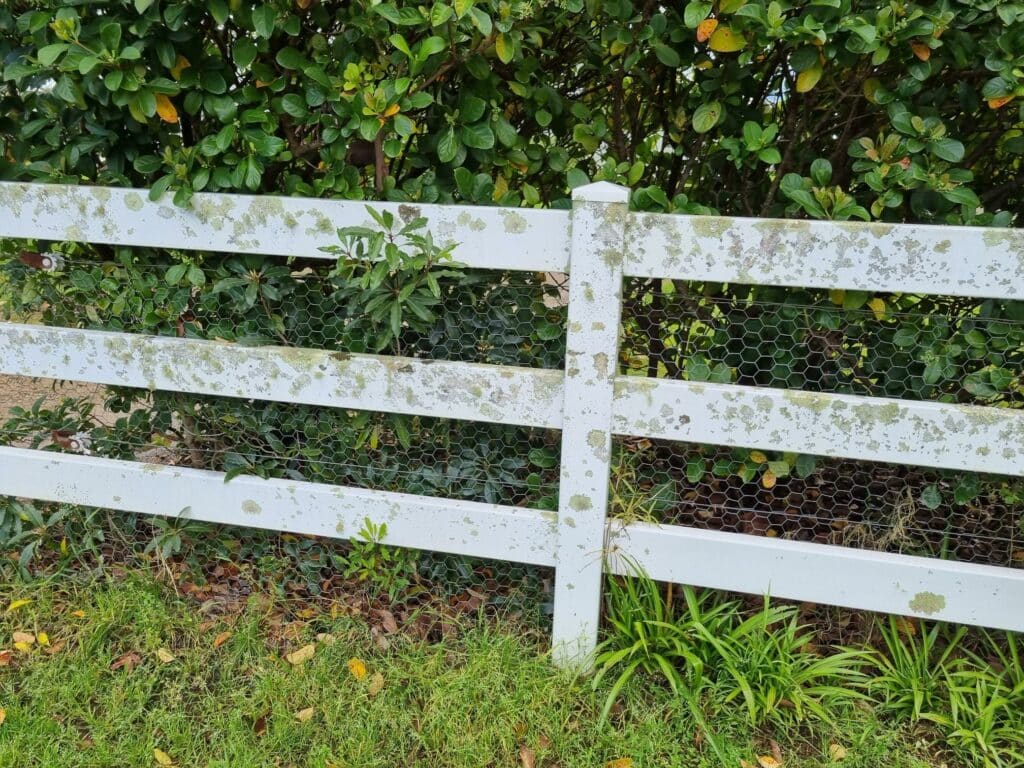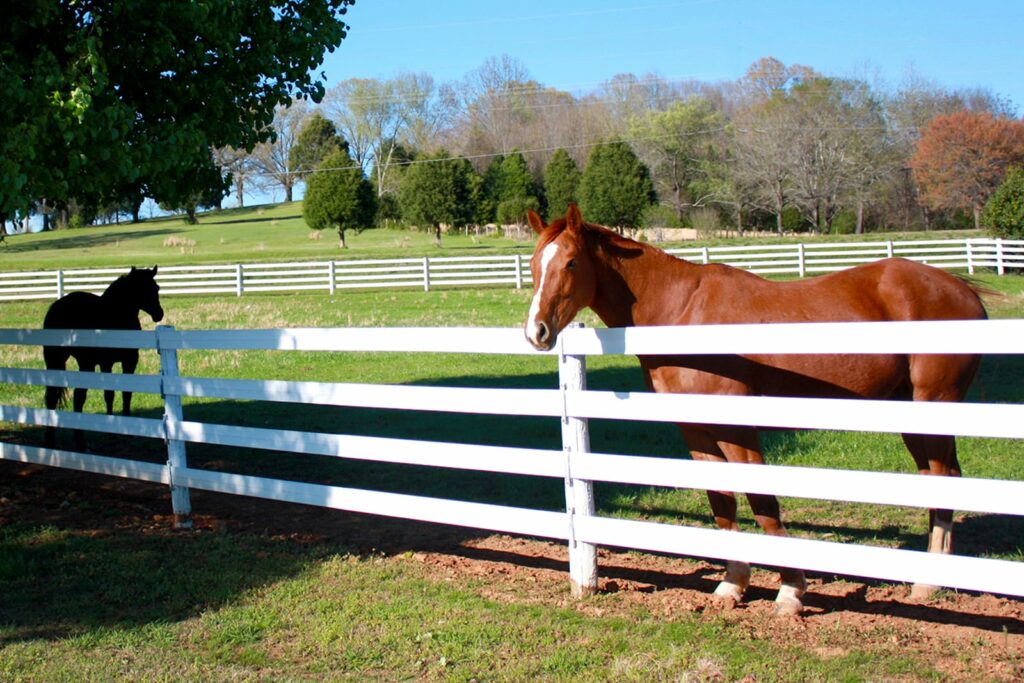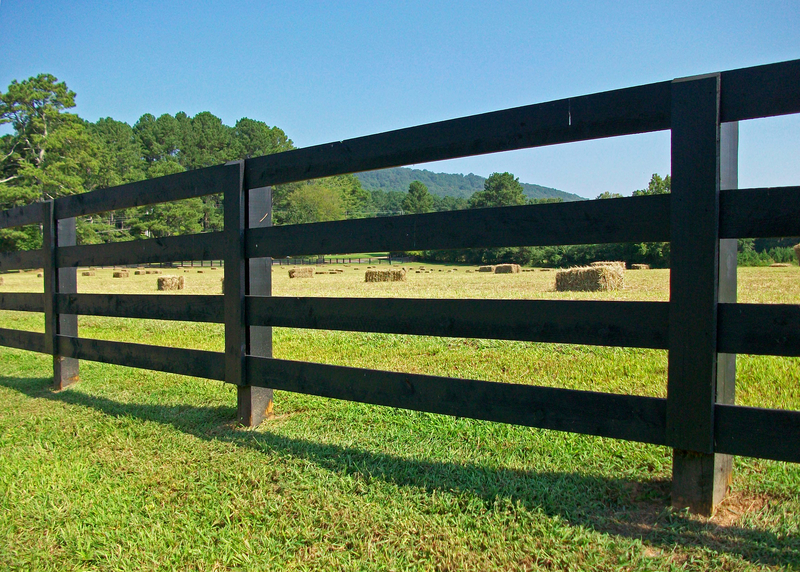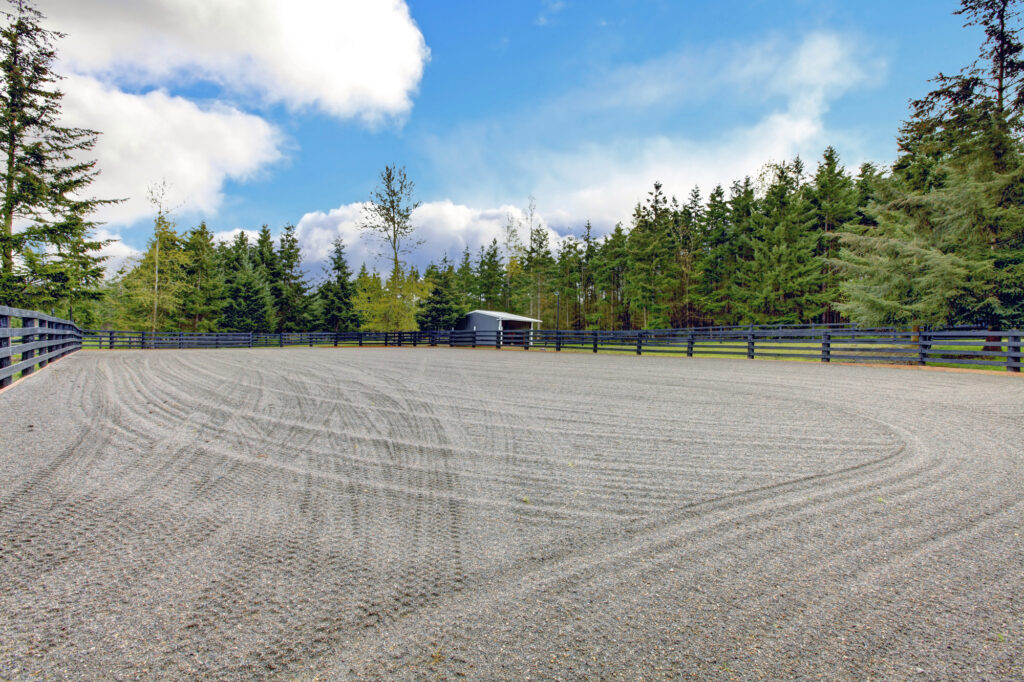Stock & Noble
Is your horse fencing resistant to mould?
- BY Tripti Kakkar

Mould is a type of fungus or bacteria that can grow on any moist surface, especially in humid and shady environments.
This fungus can significantly impact horse fencing, as it can weaken the fence and pose a potential health risk to horses. If left unchecked, mould can cause the fence to deteriorate and eventually fail, creating unsafe conditions for horses and other animals. Additionally, mould can release spores into the air, which can be harmful to both horses and humans if inhaled. While many types of mould thrive in average indoor temperatures, they cannot survive extreme temperatures below 40 degrees or above 100 degrees Fahrenheit.
It is essential to regularly inspect and maintain horse fences to prevent mould growth and ensure the safety and health of horses.
Fortunately, there are numerous solutions to remove mould and kill bacteria, making it a manageable issue. However, it is worth choosing a fencing material that is resistant to mould growth and can also help prevent these issues.
If you are about to buy or replace your horse fencing and are looking for a solution that’s free of any potential mould and the consequent stress, then keep reading.
At Stock & Noble, we provide the finest and safest fencing solutions to high-end property owners across Australia and New Zealand. All our products are carefully chosen based on their global success and horse safety. We know the issues that can arise due to mould and that’s why all our solutions are designed to be mould resistant.
Based on our years of learning, insights from the experts and consumer feedback, we will take a closer look at the different types of horse fencing available and their ability to resist mould growth.
In the end, you will be well-informed to choose a horse fencing solution that doesn’t fall prey to mould, is equipped to prevent damage and has a longer lifespan.
Steel Post and Rail Fencing
Steel post and rail fencing is a popular choice for horse owners due to its durability and strength. This type of fence is inorganic, making it resistant to mould, mildew, and other microorganisms.
Steel post and rail fencing helps prevent mould in three ways:
- It’s inorganic, so mould cannot feed on steel as it does on wood
- Steel doesn’t hold moisture like wood does, so mould is less likely to occur,
- The pre-engineered steel fencing system is built straight and tight with no spacing and stays that way over time.
When it comes to a wooden post and rail fences, they are prone to shifts, sags, and warps as individual posts and rails twist, expand, and contract with changing moisture content. As a result, nails work out over time, leading to the fence becoming loose. Additionally, cracks and crevices in the timber develop, which allows outside moisture and mould spores to penetrate the timber more easily. However, steel framing is not susceptible to these issues as it does not change, warp, or sag due to its inorganic nature and being unaffected by moisture. All steel fencing connections are through bolts, screws, and welds that do not work out like nails, providing a more secure and stable fence.
Steel post and rail fencing can help prevent these issues and reduce the amount of maintenance required to keep your wooden fence looking good.
Flexible Rail Horse Fencing
It is a common misconception that mould cannot grow on plastic or polymer materials. While mould typically cannot break down plastic easily, these materials often contain various additives, such as plasticisers, cellulose, lubricants, stabilisers, and colourants, which are highly susceptible to mould growth.
However, some horse fencing solutions like Legacy rail have taken measures to address this issue by saturating the product in an anti-fungicide to prevent mould growth.
PVC Horse Fencing
Vinyl fences frequently encounter the problem of mould growth, which arises from water retention, accumulation of dust, or the presence of nearby trees. Among these factors, water retention is the most significant contributor and can be attributed to elements such as sprinklers, rainfall, snow, or morning dew.
The accumulation of water droplets within the cracks and crevices of the vinyl material creates an ideal breeding ground for mould bacteria to thrive.
The fence posts and baseboards are the most vulnerable areas where water can accumulate and remain, making them highly susceptible to mould growth.
Regular cleaning and maintenance are necessary to keep your PVC fence free of mould.
Electric Rope Horse Fencing
Some types of electric fencing for horses can develop mould and discolouration, such as turning green, due to moisture buildup. When selecting an electric fence, it’s important to inquire about any anti-mould technology that may be incorporated into the product during manufacturing.
The EquiRope is an example of such a product, as it is soaked in an anti-mould solution during production to prevent the growth of mould and moss. Additionally, the copper in the rope is tin-plated to avoid discolouration. The Legacy Line also includes anti-mould technology during production.
Timber Post and Rail Fencing
Mould commonly grows on wooden surfaces, as wood is very good at absorbing water. Add to this moisture, warm temperatures and mould spores (which are always in the air), and it’s the perfect storm for a mould infestation. Sadly, it’s not going to be easy to prevent mould from growing on wooden fences completely. Sometimes the weather will create a perfect situation where it can grow.
Ideally, you want to take steps to remove mould from your fences as fast as you can. If you wait too long, the fence could become irreparably damaged.
At Stock and Noble, we have a paint range that includes anti-mould. This is a great preventative to reduce the chance of mould growing and protecting your timber fence enabling it to last longer. You can even compare our differently priced timber fence paints and choose the one that works best for you. By incorporating these paints into your maintenance routine, you can effectively prevent mould from damaging your fence.
Another thing you may want to consider is using plastic or steel posts instead of wooden posts to reduce the maintenance required to keep your fence looking beautiful. It will be worth learning about different types of fence posts.
Know which horse fencing is best equipped to resist the mould?
There are several types of horse fencing solutions available and you wanted to learn which one is best suited to tackle the issue of mould.
Now you know when it comes to horse fencing, vinyl fences are particularly prone to mould growth due to water retention, nearby trees, and dust accumulation. Similarly, timber fences can turn green due to the growth of green algae, mould, or mildew caused by water retention in the wooden rails. Consistent cleaning and maintenance might be needed to prevent mould growth on wooden and PVC fencing.
When selecting horse fencing to combat mould, it’s crucial to factor in the materials and manufacturing techniques that are utilised to prevent mould growth. Steel post and rail fencing and Legacy flexible rail are particularly advantageous as they are inorganic and treated with anti-fungicide solutions.
Opting for the appropriate horse fencing not only cuts down on maintenance expenses but also extends the fence’s durability, ensuring a secure and safe environment for your horses. If you want you can dive deeper and learn more about the easiest-to-maintain horse fencing solution that can help you save time, effort, and money and doesn’t add up to the stress of managing a horse property.
If you need more information on maintenance or choosing a horse fence that’s perfect for you, your animals and your vision, speak to one of our fencing experts. They have the relevant experience and in-depth information to guide you at every step of building a beautiful and safe equine property.




